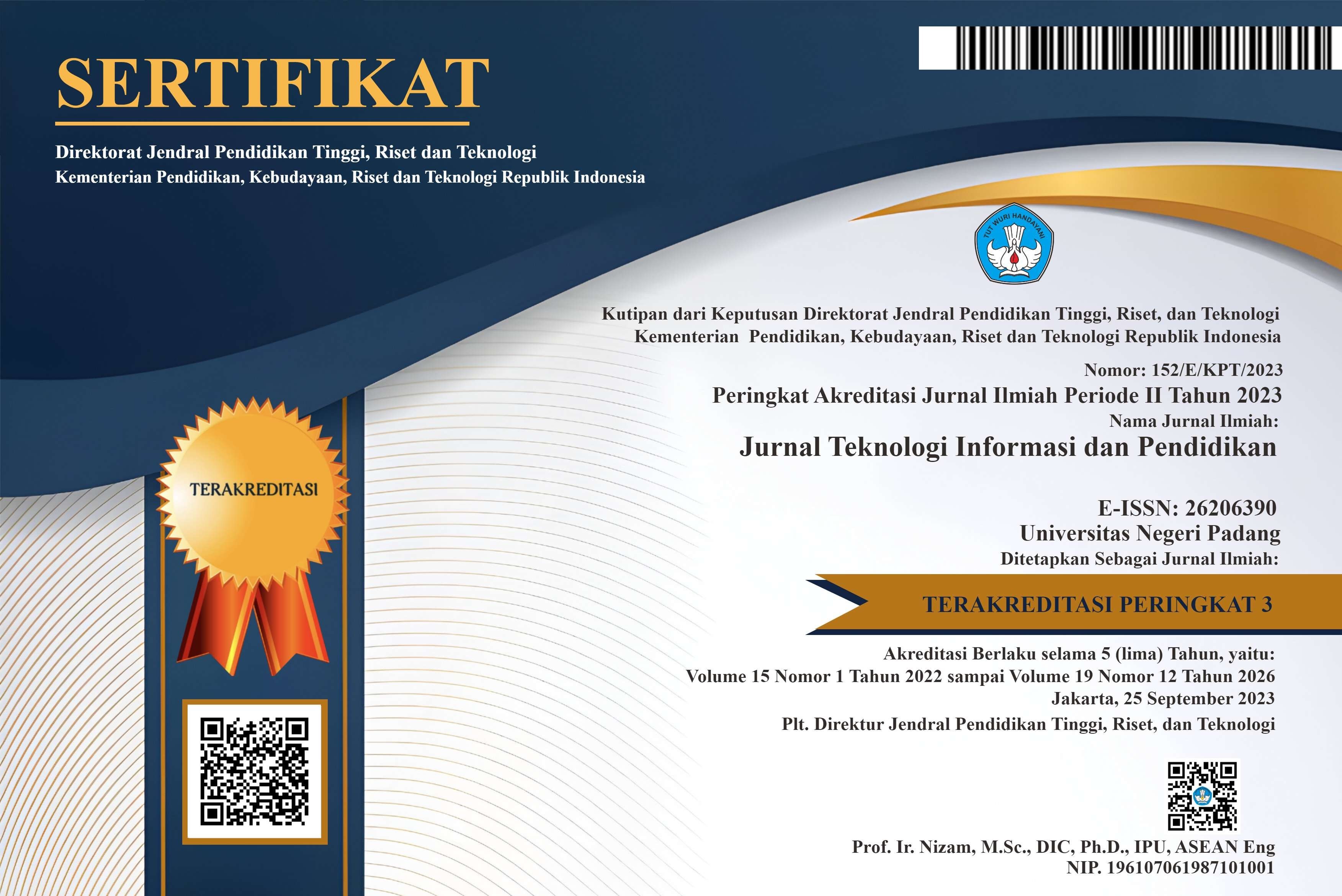Permanent Synchron Magnet Motor Speed Observer Based on Least Squares Support Vector Machine Regression
Abstract
Motor speed control requires motor speed data as feedback from control actions. Motor speed data is usually obtained from the speed sensor. In this paper, the motor speed observer for permanent magnet synchronous motor is proposed to obtain motor speed data based on motor back emf voltage making it more economical without a speed sensor. The Speed observer is designed based on the Model Reference Adapative System (MRAS) with using Least Squares Support Vector Machine Regression (LSSVMR) algorithm for adaptation mechanism tools. The proposed speed observer is tested with varying motor speeds. The test results show that the MRAS-based motor speed observer using LSSVMR has successfully estimated the rotation speed of the permanent magnet synchronous motor based on the back emf motor voltage. It can be seen from the maximum error of the motor speed, ie only 3.7 rpm at transient conditions and close to zero at steady state
References
M. Yuhendri, Ahyanuardi, and Aswardi, “Direct torque control strategy of PMSM employing ultra sparse matrix converter”, International Journal of Power Electronic and Drive System, vol. 9, no. 1, pp. 133-143, 2018.
I.M. Hinkkanen, S.E. Saarakkala, H.A.A Awan, E. Molsa, and T. Tuovinen, “Observers for Sensorless Synchronous Motor Drives: Framework for Design and Analysis,” IEEE Transactions on Industry Applications, vol. 54, no. 6, pp. 6090 – 6100, 2018.
T. Shi, Z. Wang, and C. Xia, “Speed Measurement Error Suppression for PMSM Control System Using Self-Adaption Kalman Observer,” IEEE Transactions on Industrial Electronics, vol. 62, no. 5, pp. 2753–2763, 2015.
L. Vesely, and Z. Bradac, “MRAS identification of permanent magnet synchronous motor parameters,” IFAC Papers Online, vol. 51, no.6, pp. 250–255, 2018
M. Yuhendri, M. Ashari, and M. H. Purnomo, “A novel sensorless MPPT for wind turbine generators using very sparse matrix converter based on hybrid inteligent control,” International Review of Electrical Engineering, vol. 10, no. 2, pp. 233-243, 2015.
S. Zhang, M. Wang, P. Zheng, G. Qiao, F. Liu, and L. Gan, “An Easy to Implement Hysteresis Model Identification Method Based on Support Vector Regression,” IEEE Transactions on Magnetics, vol. 53, no. 11, pp. 1–4, 2017
K. Li, R. Zhang, F. Li, L. Su, H. Wang, and P. Chen, “A New Rotation Machinery Fault Diagnosis Method Based on Deep Structure and Sparse Least Squares Support Vector Machine,” IEEE Access, vol. 7, pp. 26571–26580, 2019.
A. Zendehboudi, M.A. Baseer, and R. Saidur, “Application of support vector machine models for forecasting solar and wind energy resources: A review,” Journal of Cleaner Production, vol. 199, pp. 272–285, 2018.
S. Nan, L. Sun, B. Chen, Z. Lin, and K.A. Toh, “ Density-Dependent Quantized Least Squares Support Vector Machine for Large Data Sets,” IEEE Transactions on Neural Networks and Learning Systems, vol. 28, no. 1, pp. 94–106, 2017.
K.D Brabanter,P. Karsmakers, F. Ojeda, C. Alzate, K.D Brabanter, K. Pelckmans, B.D. Moor, J. Vanewalle and J.A.K. Suykens, LS-SVMM lab toolbox user’s guide version 1.7. Katholieke Universiteit Leuven, Heverlee, 2010.
Copyright (c) 2020 Jurnal Teknologi Informasi dan Pendidikan

This work is licensed under a Creative Commons Attribution-ShareAlike 4.0 International License.















.png)














